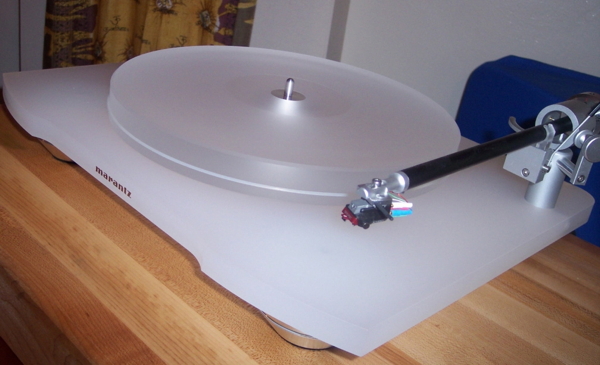Acrylic is a term used to describe a family of plastics technically known as polyacrylates. Derived from acrylic (or methacrylic) acid, polyacrylates include a variety of materials, including thermoplastic and thermosetting resins, textile fibers, paints, adhesives, et al. One of the most important is a material called polymethyl methacrylate, or PMMA. (Another interesting member of this family is cyanoacrylate, better known as super glue.)

plinth and platter of this turntable are both made from acrylic
PMMA was first introduced by Rohm & Haas under the tradename, Plexiglass®. It offers a moderate level of engineering performance, with decent mechanical properties. It is a relatively low cost material, and is to easy to process. It can be cast, extruded, injection molded, machined, laser cut, polished, and more.
The most important thing to remember about PMMA – it has exceptionally high transparency, and has the highest optical clarity of any thermoplastic. It is used as a replacement for glass in a wide variety of industries, including aquariums (residential and commercial), consumer electronics (cell phone screens and camera lenses), automotive lighting, commercial airline windows, and contact lenses.
In consumer electronics, PMMA is often used in sheet form. It is cast in a flat sheet, so is almost perfectly flat, and optically pure. A hard coat can be added to improve scratch resistance. The sheet can then be cut to size (via a water jet, laser, or CNC machining).







Want to hear more from plastics guy?
Sign up for a monthly update of our latest posts.
You have Successfully Subscribed!